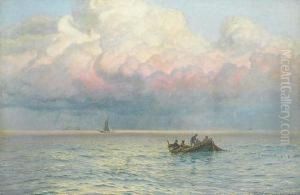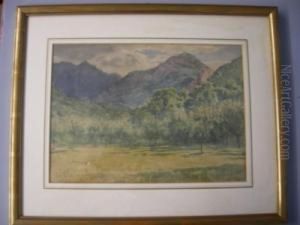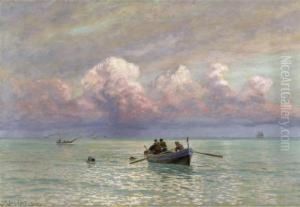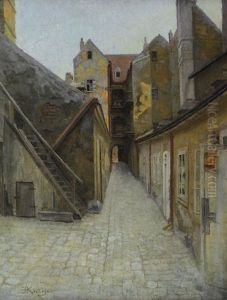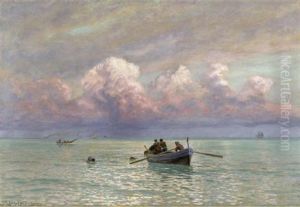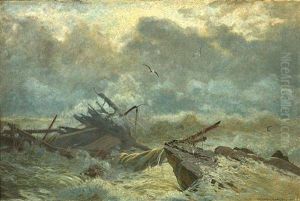Fritz Von Kleudgen Paintings
Fritz von Kleudgen was a German artist known for his paintings and illustrations, born in 1850 in the Kingdom of Bavaria, which was then part of the German Confederation. He lived during a period of significant change in the art world, as the traditional academic styles of the 19th century began to give way to newer movements such as Impressionism and eventually Modernism.
Von Kleudgen received his artistic training at the Academies of Fine Arts in Munich and Nuremberg, which were known for their rigorous programs based on classical techniques and the study of historical styles. His early work was influenced by the Romantic movement, which was characterized by its emphasis on emotion, nature, and the sublime. He worked primarily as a painter but also produced a number of illustrations for books and magazines, which was a common practice for artists seeking to supplement their income.
Throughout his career, von Kleudgen exhibited his work in various galleries and salons. His subject matter often included landscapes, historical scenes, and portraits, reflecting the tastes and interests of the time. Despite the fact that he was a competent artist, von Kleudgen did not achieve the same level of fame or recognition as some of his contemporaries. His work was appreciated within certain art circles, but he did not leave a significant mark on the art world or influence future generations of artists in the way that more celebrated artists of his time did.
Fritz von Kleudgen passed away in 1924, leaving behind a body of work that provides insight into the styles and techniques of the late 19th and early 20th centuries. His paintings are occasionally displayed in regional museums in Germany and are valued by collectors who have an interest in this period of art history.
